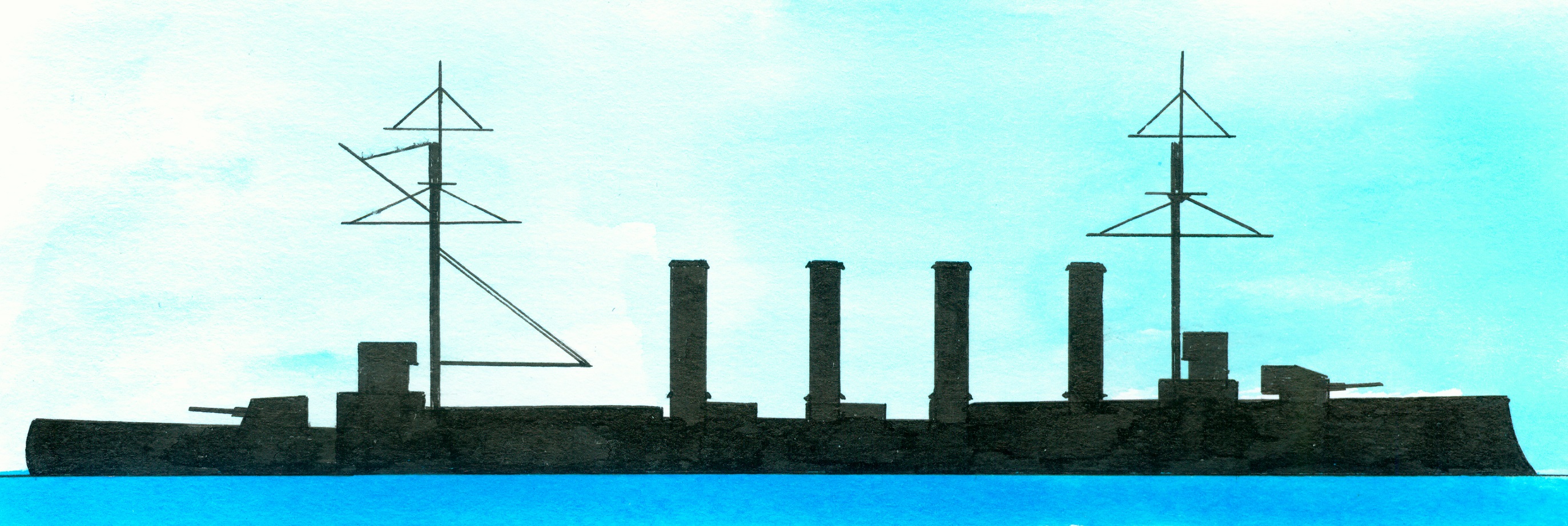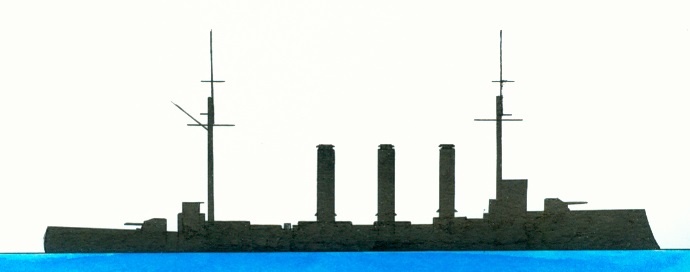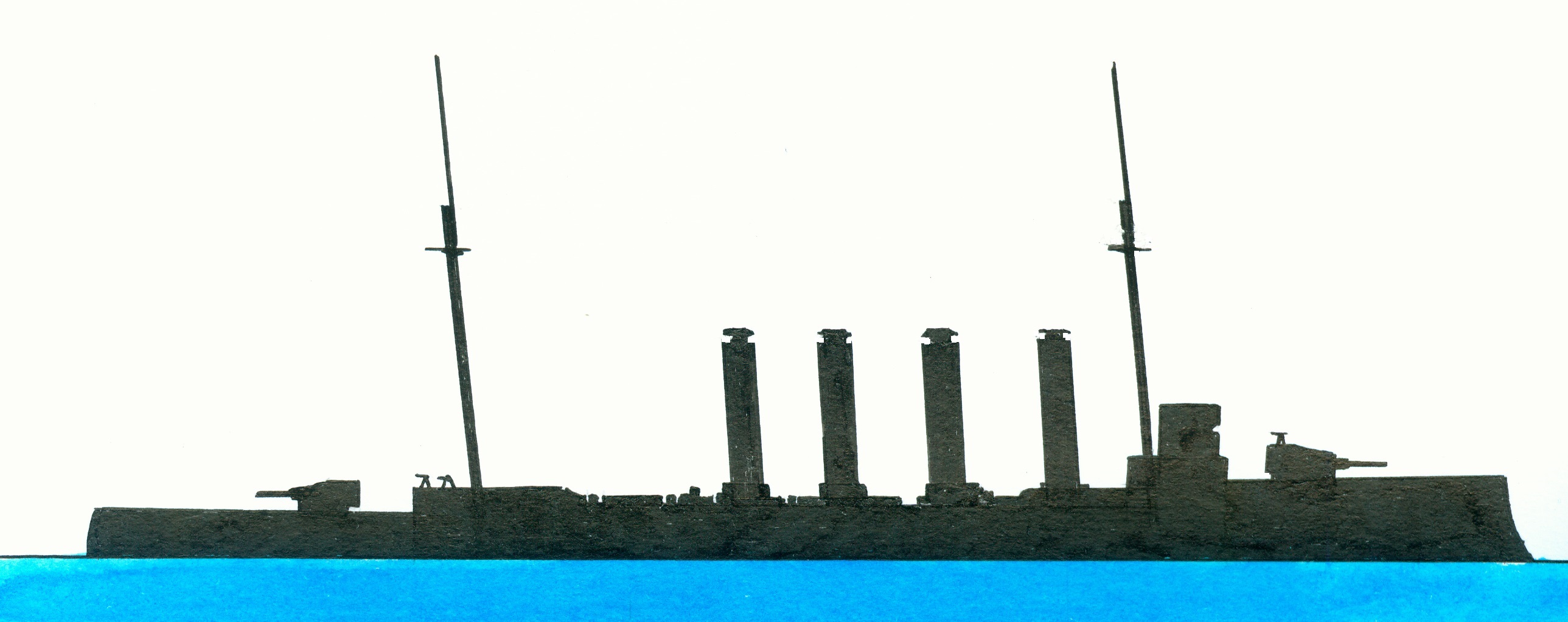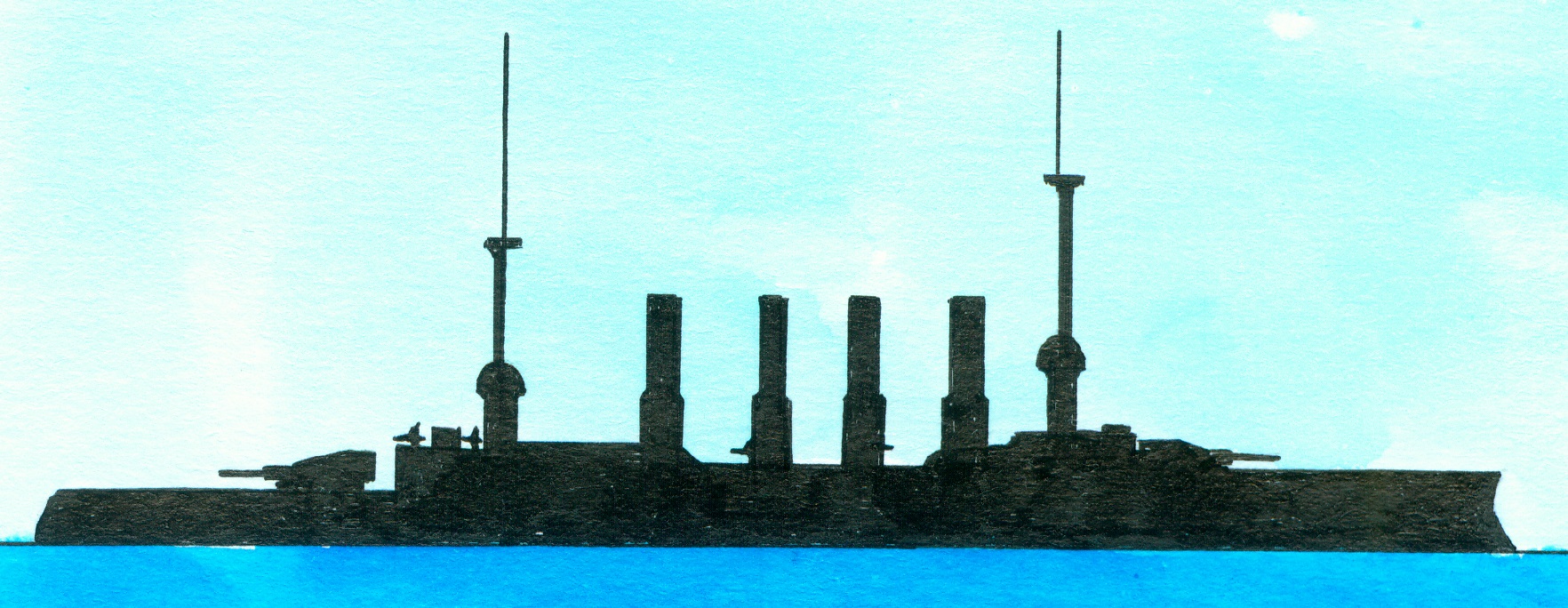British Drake-class
Britism Monmouth-class
British Devonshire-class
German SMS Gneisenau
Laid down by London and Glasgow Shipping Company. Govan, Scotland on 29 August 1899, launched on 13 November 1901, completed on 2 December 1903 and sunk during the Battle of Coronel against a German squadron on 1 November 1914 with her entire crew of 735 men. She was heavily damaged by the SM Gneisenau (1) and finally capsized after the German light cruiser SMS Nürnberg (2) attacked her. Building costs 709.085-979.591 pond sterling. Of the Monmouth-class also called County-class, built to act against light cruisers and armed merchant ships consisting of the Monmouth, Bedford, Essex, Kent, Berwick, Cornwall, Cumberland. Donegal, Lancaster and Suffolk. Preceded by the Drake-class and succeeded by the Devonshire-class. General technical specifications. Displacement 10.000 (normal) and as dimensions 141,3 (over all) x 20,1 x 7,6 metres or 463.6 x 66 x 25 feet. Horsepower of 22.000 ihp supplied by 2-4 cylinder triple expansion steam engines and 31 water tube -boilers allowing a speed of 23 knots. Their crew numbered 678 men. The armour consisted of a 5,1-10,2cm/2-4” thick deck, 1,9-5,1cm/0.75-2” thick decks, 12,7cm/5” thick bulkheads with the gun turrets and conning tower protected by respectively 13c,/5” and 25,4cm/10”. The armament consisted of 2x1+10x1-15,2cm/6” breech loading MkVII guns, 10x1-7,6cm/3”/12pd quick firing 12 cwt guns, 34,7cm/3pd quick firing Hotchkiss guns and 2x1-45cm/18” torpedo tubes.
Notes
1. Laid down at the shipyard of AG Weser, Bremen, Germany with yard number 144 on 28 December 1904, launched on 14 June 1906, building costs more as 19 million goldmarks, commissioned on 6 March 1908 and sunk in a battle with the British fleet during the so-called Battle of the Falkland Islands on 8 December 1914. Of the Schanhorst-class consisting of the Scharnhorst and the Gneisenau. Preceded by the Roon-class and succeeded by the SMS Blücher. General technical specifications of this class. Displacement 11.616 tons/11.433 long tons12.804 short tons (standard)-12.985 tons/12.780 long tons/14.314 short tons (full load) with as dimensions 143.8 (waterline) 144,6 (overall) x 21,6 x 8,37 metres or 472-474.5 x 70.10 x 26.6 feet. The 3 shaft triple expansion engines and 18 water-tube boilers supplied 26.000 ihp (design) allowing a speed of 22,7 knots; during trials 30.396 ihp and a speed of 23,6 knots. Coal bunker capacity 800 tons/880 short tons (standard)-2.000 tons/2.200 short tons (maximum). Range with a cruising speed of 12 knots was 4.800 nautical miles. Their crew numbered 840 men (included 52 officers). The armour consisted of a 15cm/5.9” thick belt, a 3,5-6cm/1.4-2.4” thick deck and with the gun turrets protected by 18c,/7.1” thick armour. The armament consisted of 2x4&4x1-21cm/8.3” L/40 quick firing guns, 6x1-15cm/5.9” L/40 quick firing guns, 18x1-8,8cm/3.5” guns and 4-45cm/18” submerged torpedo tubes (1x bow, 2 sides, 1 stern).
2. Königsberg-light cruiser, laid down at Howaldtswerke, Kiel, Germany in 1906, launched on 28 April 1906 and commissioned on 10 Aril 1908. Armament consisted of 10-10,5cm/4.1” quick firing guns and 2-45cm/18” torpedo tubes.




